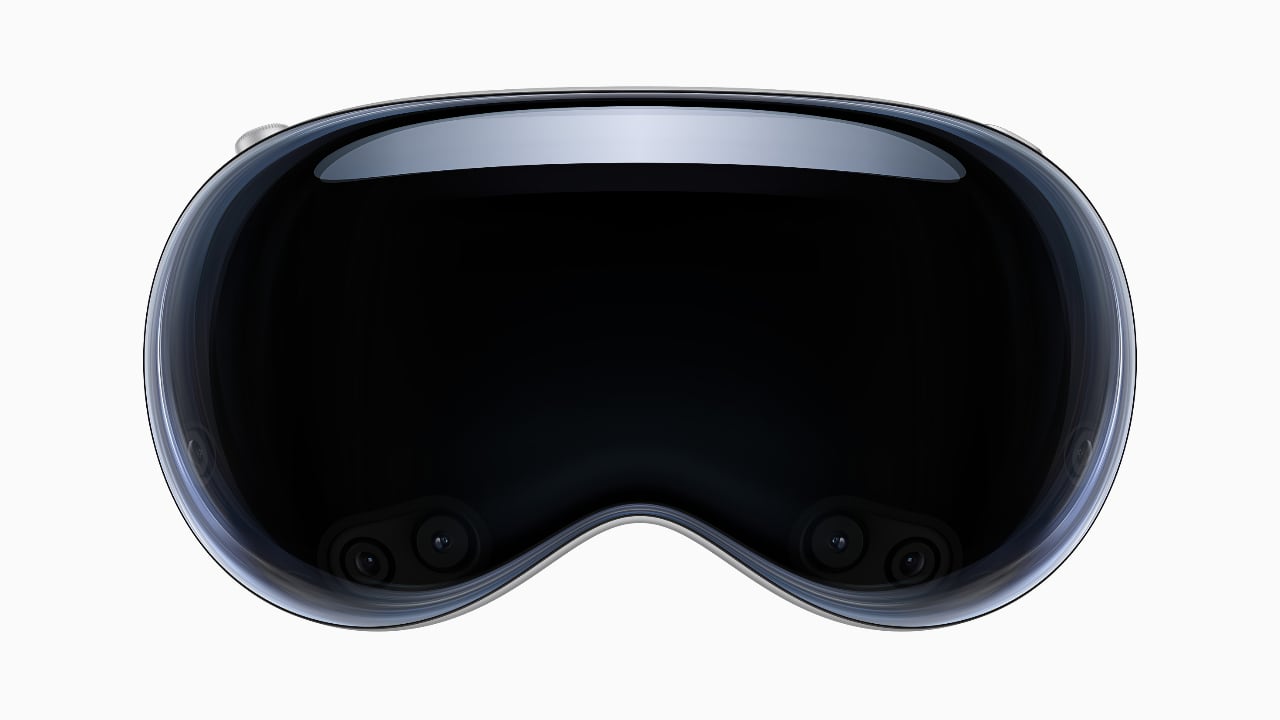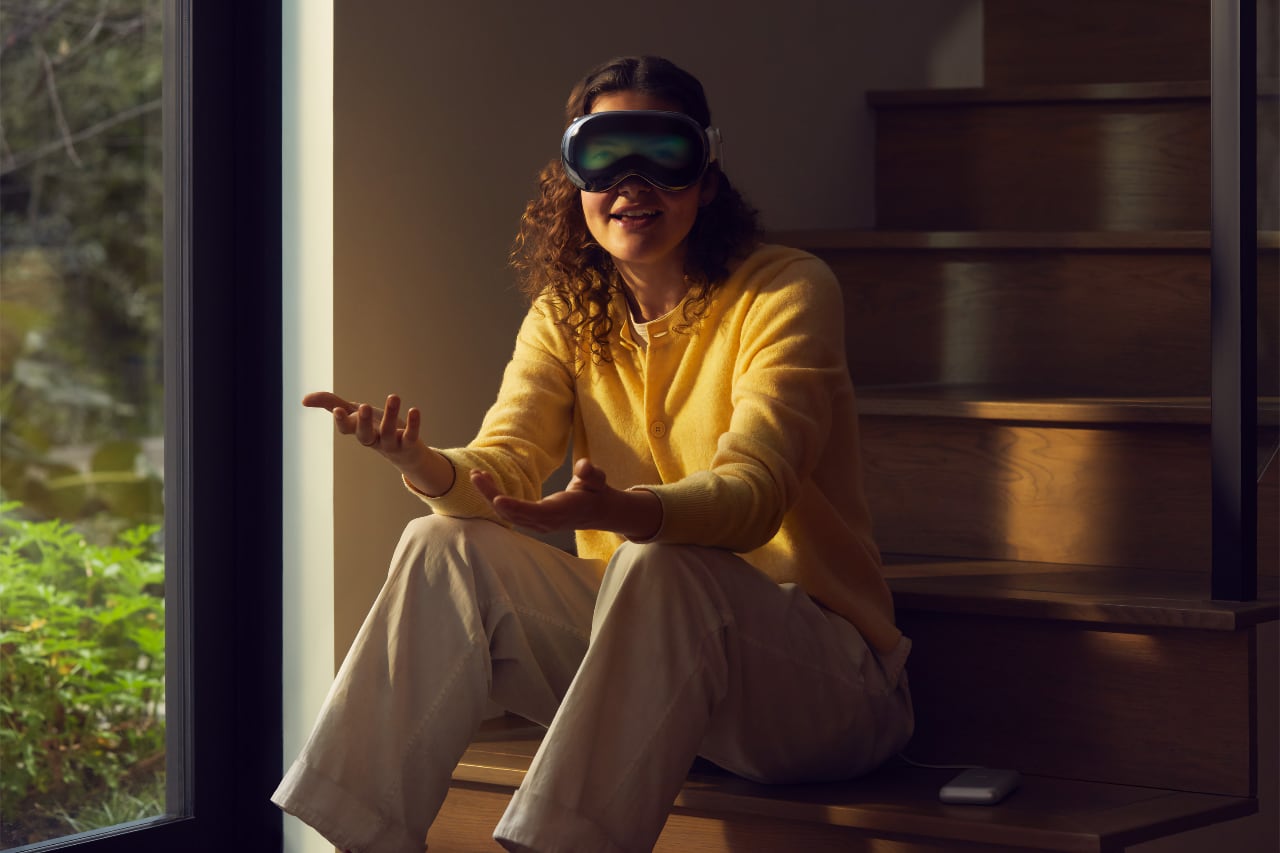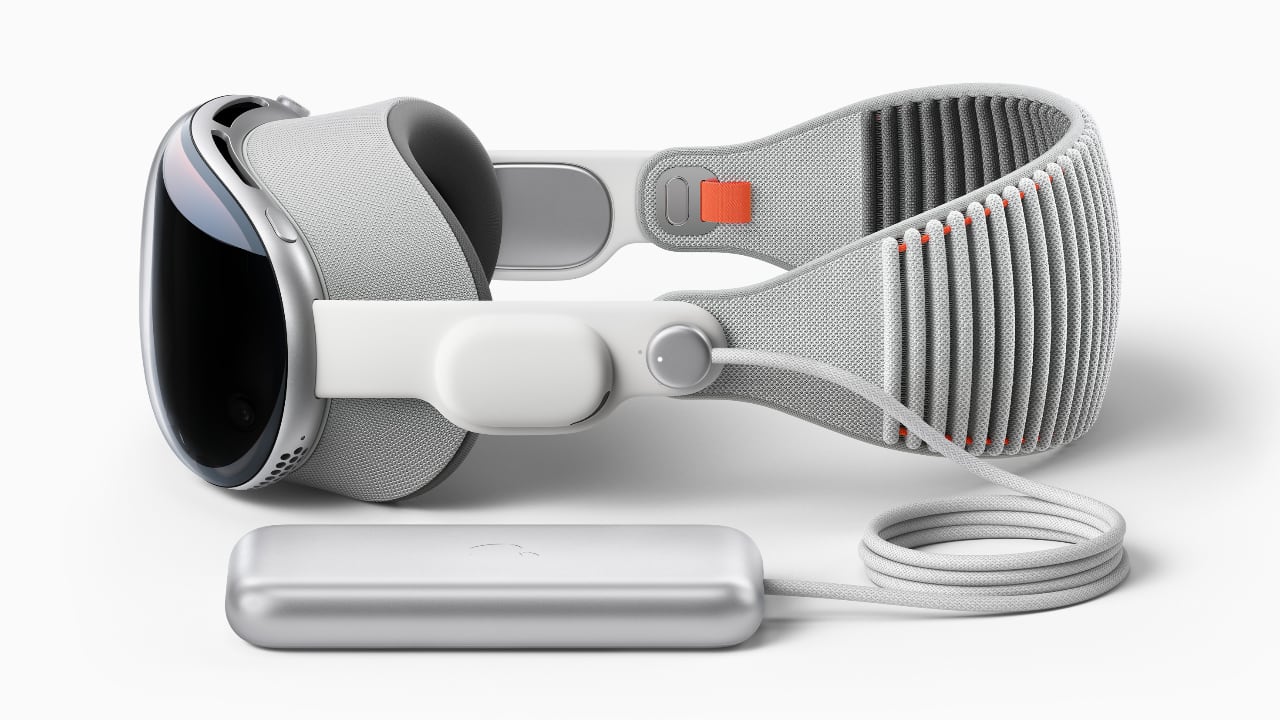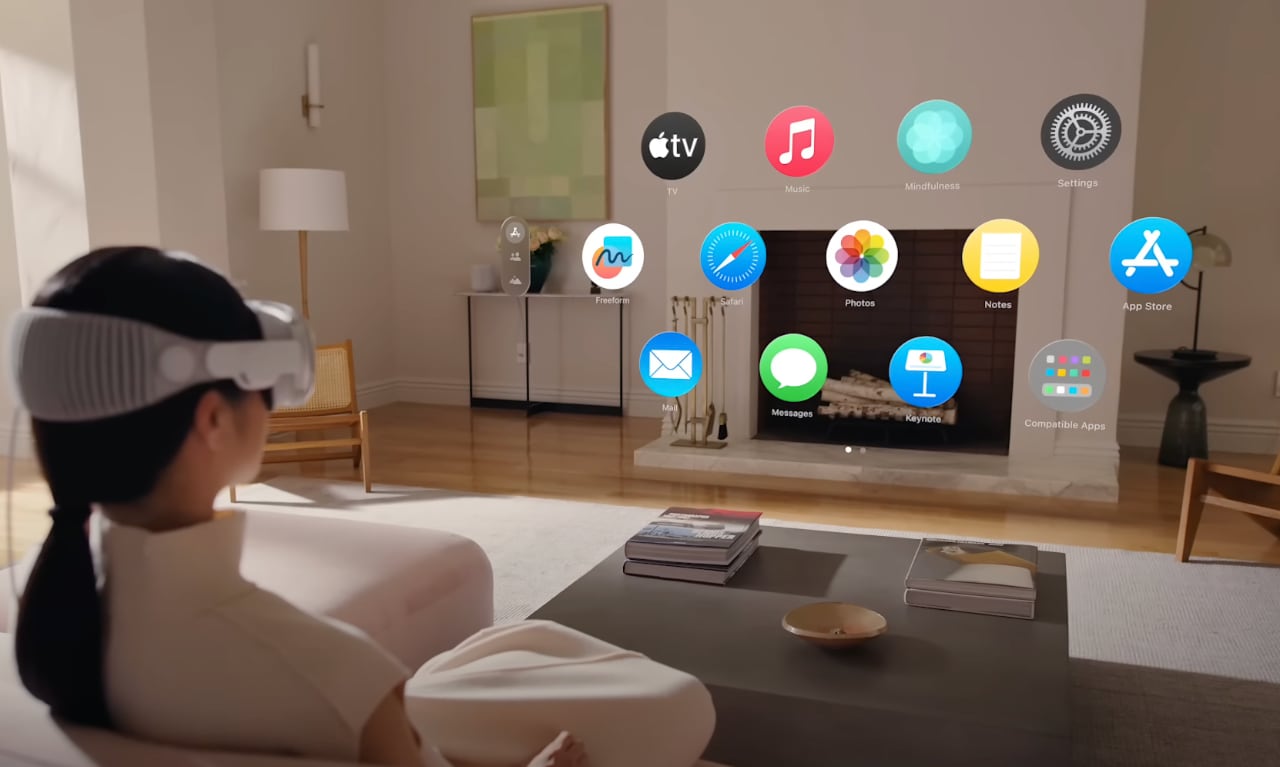
Can Apple’s long-awaited and truly expensive Spatial Computing headset provide the acceleration the VR/AR/metaverse market so badly needs?
Tim Cook claimed this would be the most impressive WWDC ever and during the Vision Pro reveal, Apple’s pitch felt more like a sci-fi movie’s product intro than something shipping in six months or so. This is both a compliment to exceptionally high production values and a note of caution in that this isn’t another iPhone or Mac that’s daily applications are clear and compelling.
Vision Pro: The Price
Prior to launch, there was talk of a high price tag with a first generation system primarily aimed at developers. At WWDC, the price was certainly high - $3499 - but the pitch was to consumers. Apple deliberately set out how this price tag would compare to buying a high-end TV, sound system, 3D camera and other devices now conveniently bundled into Vision Pro. Just as Steve Jobs pitched the original iPhone as replacing a phone, a touch-screen iPod and Internet Communicate, so now Vision Pro was priced up as another relative bargain.
A Vision Pro suggests that, someday, there might be a standard Vision. The iPhone’s launch price was cut, carrier subsidies swung into play. However, the concept Apple has settled on is so ambitious and reliant on so many sensors, it’s difficult to imagine it ever being less than a couple of iPhone Pro’s.
Price matters not just because it determines whether you or I can afford, but also whether the market will grow big enough to sustain the interest of the developers. VR platforms like Oculus and PSVR 2 suffer because they’re just a fraction of the PS5 or Switch audience and the return is consequently less.
Just like Apple Watch’s product introduction, there was no singular must-have killer app. The emphasis was on the overall concept and experience rather than one singular application jumping out as the primary reason to invest.
Vision Pro: The Concept
In some ways Vision Pro is more like Microsoft’s HoloLens AR headset than Oculus or PlayStation VR2. There was no mention of the ‘metaverse’ or Virtual Reality - this was the dawn of a new product category pioneered by Apple and dubbed Spatial Computing.
Technically speaking, Vision Pro seems most like a VR headset which puts a pair of 4K OLED screens in front of your eyes and everything you see comes through those displays, whether it be a movie or a game or an app. You can’t see through the headset in the way you do with HoloLens with its see-through lenses and projected imagery. However, Apple has put enormous engineering resources to blur the distinction.
When you enter Vision Pro, you’re not onboard a spaceship or a log cabin as you are in Oculus, you’re in your living room with familiar iOS app icons floating in front of you. When someone walks into the living room, you can turn to them and a front facing screen shows your eyes looking back at that person.

Honestly? We're not overly sure of that eye projection...
The Vision Pro presentation began in an office setting with a middle-aged man doing some standard office work. It wasn’t a cool kid zipping through cyberspace in his bedroom. It was a very average guy working with his colleagues in the same office, Magic Keyboard and Trackpad at his fingers, but with multiple virtual work spaces to get his job done quicker and more easily. Later we would see some Microsoft office apps and be reassured the display offered exceptionally clarity for resolving text and Excel spreadsheets. In this scenario, the workspace is very much an augmented reality space. The app screens float around you, but you can see your office in full clarity and read your colleague’s gestures, easily pick up a USB stick being handed to you. It’s a visual equivalent to the AirPod Pro’s transparency mode, an enhanced synthesis of different realities.
Later, during the third-party app section, we experienced more typical AR applications; a medical app showed a human heart floating in space, an engineering app showed a Formula 1 car. There will be a dedicated Vision Pro App Store at launch with apps built for VisionOS and thousands of compatible iPhone and iPad apps - you will, should you want, be able to control Adobe Lightroom with your eyes and hand tracking. These third-party flashed by quite quickly and were not as slick as Apple’s portrayal of more typical office work although a home planetarium was impressive.
In the personal space, one of the most affecting demos showed how you can interact with family pictures in your living room, surround yourself with a panoramic shot from your iPhone or immerse yourself in a 3D recording. Vision Pro is Apple’s first 3D camera system and Apple’s simulation of the user reliving a young daughter’s birthday in immersive 3D was very Minority Report.
We also had Vision Pro serving as a movie theatre, one where the setting for your movie watching could be atop a remote mountain, or plunging you within a 3D movie like Avatar, or having dinosaurs walk out of the movie frame as 3D objects above your coffee table.
Disney’s CEO Bob Iger walked onto stage to talk up an alliance with Apple — the world’s leading storytelling company together with its leading technology company. A brief sizzle reel whipped through some augmented reality apps, such as watching a sports event with overlaid data. Disney+ will be on Vision Pro from day one, but what that means for must-have experiences remains to be seen.
Vision Pro: The Product

The wearable battery will give you two hours of operation
Apple calls it ‘The most advanced personal electronics device ever’ with over 5000 patents produced during its development, another callback to the iPhone introduction.
At $3,500 you’d expect a premium finish and that’s what you get. A custom lightweight aluminium alloy frame with a single piece of laminated glass in the front over the sensors and the Eye Sight screen that displays your eyes to other people in the room. The eyes are part of a detailed 3D persona map of your face that is also used when in a FaceTime call to simulate your facial reactions. This animated persona is also available in Zoom, Teams etc.
There’s 23 million pixels across both microLED displays, more pixels than a 4K screen for each eye. The Vision Pro has such a compact frame that there’s no way to accommodate glasses wearers other than by custom lens inserts provided by Zeiss. The lenses will attach magnetically, so theoretically could be quickly swapped out between different users, but pricing wasn’t revealed.
Cameras within the headset allow for eye-tracking and also enable an Optic ID system that scans your retina for a Face ID type experience within the headset. When browsing the web in Safari, the system responds to your eye movements and finger gestures. Look at a search box and you can simply speak to input your enquiry.
The headset works with AirPods Pro so if you want to use on a flight, but also comes with its own speakers to deliver spatial audio.
The front of the headset has a pair of high resolution cameras for stereoscopic vision with over one billion pixels being streamed per second. These cameras work in concert as a 3D camera and also help with head and hand tracking, alongside IR sensors. In total there are 12 cameras, five sensors and six microphones.
A Digital Crown, similar to that on Apple Watch, offers one-click access to your AR home and allows for varying immersion in Environments - e.g. fading the transparency effect.
The headset is powered either by the mains or a cabled battery, the latter offering two hours use time. The device will synch with other Apple devices, of course, most notably a demo showed someone opening a MacBook and the screen popping into the Augmented Reality view but there’s no cabled connection as with Oculus Rift.
At this point, while there’s a wealth of product info online, the exact technical specs of the headset aren’t yet available - there’s no indication as yet of differing specification / prices for unified memory / storage in the usual Mac / iOS device style.
Vision Pro: Games
In 2017, Apple’s WWDC presentation made much of an ILMxLAB Star Wars Unreal Engine VR Demo running on Mac. At the time, we speculated this was laying the ground work for production tools for an Apple VR headset. It would seem a safe bet to expect WWDC 23 would showcase a port of Vader Immortal. No Man’s Sky has just come to Mac and has an excellent PSVR2 port, as does Resident Evil Village which came to Mac last year. Instead, Apple played up the potential of Apple Arcade titles coming to Vision Pro, a basketball game being played in your living room on a table.
It’s possible to speculate that Sony licensing deals for PSVR 2 or more likely Apple’s AR theme precluded giving over much time to this immersive VR content. The Vision Pro headset comes with an M2 chip plus an all-new R1 chip specifically developed for the headset. We also know there’s some form of active cooling. What’s unclear is how much of this processing power is given over to the synthesis of the 3D cameras and other sensors and how much could be for 3D gaming. Apple’s M2 chips are a generation ahead of PS5’s process, during the Mac presentation we learnt of a new Game Mode and enhancements to Metal 3, but whether it can match a dedicated console running off the main with a massive cooling system will be interesting to see.
In terms of interface, Oculus and PSVR2 iterate on dedicated physical controllers with haptics. Vision Pro instead relies upon eye tracking, detecting finger movements (as does Oculus) and, for twitch gaming, a PlayStation or Xbox controller via Bluetooth.
Vision Pro: a long road ahead

Interesting, but enough to get people to part with $3499 for the experience?
At times during the presentation, Hollywood-level production values gave a sense of Apple’s Reality Distortion Effect redefining this headset market and hinting at a new must-have product, a new category defining eco-system. At other times, the ambition seems outlandish. Yes, having your iPhone / Mac display expand out into space seems cool, but will the peripheral vision make working with a mouse/keyboard as seamless as shown? The headset will be light, but is all-day use really practical? Ironically, Apple’s Apple Watch demo highlighted a Myopia feature to encourage children to play outside…
First impressions from those at the event praise Vision Pro as offering the best VR experience yet, the OLED screens are sharp, 3D movies whether Avatar or shot with the system itself are dazzling, the detail on a dinosaur see close-up mesmerising. The familiar iOS / Mac icons and apps are immediately intuitive to use with Vision Pro. Yet the isolating effect of wearing a headset is mitigated but not fully resolved. The 3D persona is technically impressive but still obviously a simulation. The recording of a child’s birthday is amazing, but would you wear the headset to capture and watch with simulated eyes?
Is it likely in a few years you’ll reach out to put on your Vision Pro to experience the day’s morning news and social feeds, then begin a day’s work in Spatial Computing? This is without doubt Apple’s most ambitious device to date, but this is just the start of very a long journey.
The first Vision Pro units will be available exclusively in the US from Apple Stores and online starting in 2024.
Tags: Technology

Comments